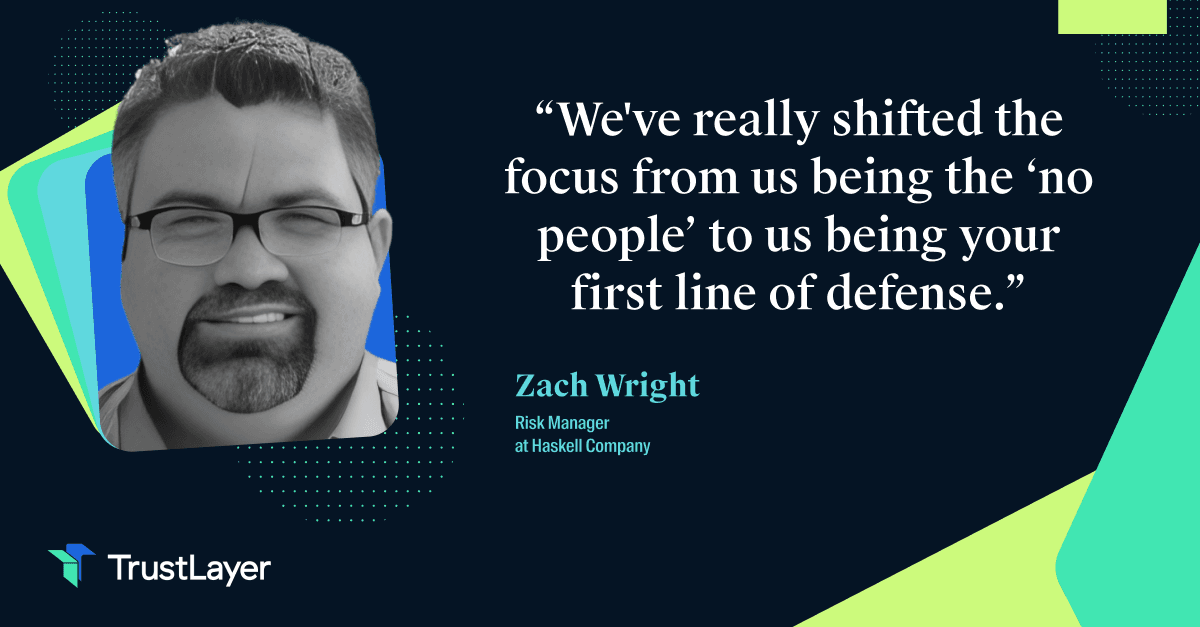The Importance of Compliance in Real Estate Lending
Insurance compliance stands as a pivotal component in the real estate lending landscape. For loan providers, ensuring that borrowers maintain adequate insurance coverage is not merely a formality; it's a critical safeguard against potential financial losses. Non-compliance can lead to severe repercussions, including costly claims that can jeopardize the lender's bottom line.
Moreover, the landscape of real estate lending is increasingly regulated with stringent measures. A recent study revealed that over 60% of loan providers experienced regulatory scrutiny related to compliance issues in the past year. This highlights the need for effective compliance mechanisms that adapt to the fast-paced real estate market.
As we delve deeper into insurance compliance, automation emerges as a crucial ally for real estate loan providers. By harnessing technology, lenders can streamline processes, mitigate risks, and ensure better compliance outcomes.
The role of education and training, in addition to technological advancements, cannot be overstated. Loan providers must equip their teams with the knowledge and skills to navigate the complex regulatory environment. Regular training sessions and workshops can empower staff to recognize compliance issues early, thereby reducing the likelihood of costly mistakes. Furthermore, fostering a culture of compliance within the organization encourages employees to prioritize adherence to regulations, creating a more resilient business model.
Another critical aspect of compliance in real estate lending is the relationship between lenders and insurance providers. A collaborative approach can enhance understanding of insurance requirements and help craft policies that meet regulatory standards and protect both parties' interests. By working closely with insurers, lenders can gain insights into emerging risks and trends, allowing them to adapt their compliance strategies proactively. This synergy can lead to a more robust lending environment where lenders and borrowers feel secure and informed.
The Challenges of Manual Insurance Compliance Tracking
Managing insurance compliance has traditionally been arduous for real estate loan providers. Manual tracking systems are often riddled with challenges that consume time and increase the likelihood of errors. One survey revealed that approximately 70% of industry professionals cited manual processes as a significant source of compliance-related challenges.
One of the foremost issues is the sheer volume of documents that need to be assessed. Checklists, certificates of insurance (COIs), and other vital documents can overwhelm a compliance officer, leading to missed deadlines or trivial errors that might have significant repercussions. A single overlooked COI could lead to liabilities worth thousands, if not millions, of dollars.
Furthermore, manual compliance tracking lacks the real-time oversight that automation offers. Without timely updates and alerts, loan providers may find themselves in precarious situations, unaware of coverage lapses until too late. This creates a reactive rather than proactive compliance culture, which is not sustainable in today's fast-paced environment.
Insurance regulations are complex, adding another layer of difficulty to the volume and timing issues. Compliance officers must stay abreast of constantly changing laws and requirements, which vary significantly by state or locality. This complexity can lead to confusion, as different stakeholders may interpret regulations differently, resulting in inconsistent compliance practices across teams. Keeping up with these changes often requires already stretched resources, leading to burnout and decreased productivity among compliance staff.
Moreover, the lack of integration between various systems used for tracking compliance can exacerbate these challenges. Many organizations rely on disparate software solutions that do not communicate with one another, forcing compliance officers to reconcile data across platforms manually. This increases the potential for human error and creates inefficiencies that can slow down the entire compliance process. As a result, organizations may face compliance risks and operational inefficiencies that could impact their overall performance in a competitive market.
How Automation Simplifies COI Management
Automation is a game-changer in Certificate of Insurance (COI) management, transforming how real estate loan providers ensure compliance. By automating the collection, verification, and monitoring of COIs, lenders can shift from a reactive to a proactive approach.
One significant advantage of automation is the reduction in administrative burdens. Automated systems can streamline the receipt and validation of COIs, reducing processing time from days to hours. This surge in efficiency not only frees up valuable human resources but also ensures that compliance is maintained without constant oversight.
Additionally, automated systems offer robust tracking features that provide real-time updates on COI statuses. With centralized databases, lenders can easily access the status of all required insurance documents, ensuring they are compliant at any point. This visibility mitigates the risks associated with lapses in coverage, empowering loan providers to act swiftly if a COI is nearing expiration.
Furthermore, automated alerts can notify compliance officers of pending renewals or required changes in documentation, significantly decreasing the risk of non-compliance. By leveraging these technologies, real estate loan providers streamline their processes and foster a culture of compliance that supports their long-term business objectives.
Moreover, integrating automation in COI management can enhance data accuracy and reduce human error. Manual processes often lead to discrepancies due to miscommunication or oversight, resulting in costly compliance issues. Automated systems, on the other hand, utilize algorithms and predefined criteria to ensure that all data entered is consistent and correct. This level of precision is crucial, especially in a highly regulated industry where the stakes are high, and the margin for error is minimal.
In addition to accuracy, automation can also facilitate better communication between lenders and their clients. With automated systems in place, clients can be prompted to submit their COIs promptly and receive instant feedback on the status of their submissions. This transparency builds trust and encourages a more collaborative relationship between lenders and borrowers, ultimately leading to smoother transactions and improved customer satisfaction.
Case Study: Automation’s Impact on Real Estate Loan Providers
To illustrate the tangible benefits of automation in insurance compliance, consider a notable case study involving a mid-sized real estate loan provider, ABC Lending. Before implementing an automated compliance solution, ABC Lending faced challenges similar to those of many of its peers—loss of time, increased liability, and heightened scrutiny from regulators.
After adopting an automated system, ABC Lending realized a 40% decrease in compliance-related errors within the first year. This improvement notably translated into reduced liability exposure and fostered better relationships with borrowers who appreciated the streamlined process.
The implementation also allowed the company to enhance its risk management strategy, as it could analyze historical compliance data to identify trends and make informed decisions moving forward. By integrating automation into its compliance processes, ABC Lending positioned itself as a forward-thinking lender, leading to increased business opportunities and market share.
Moreover, automating compliance tasks freed up valuable human resources, allowing employees to focus on more strategic initiatives rather than getting bogged down in paperwork and regulatory red tape. This shift improved employee morale and encouraged a culture of innovation within the organization. Staff members were empowered to explore new technologies and processes that could further enhance customer experience and operational efficiency.
In addition to these internal benefits, ABC Lending also experienced a significant improvement in customer satisfaction metrics. With faster processing times and fewer errors, clients reported a smoother loan application experience. The positive feedback from borrowers increased referrals as satisfied customers shared their experiences with friends and family. This organic growth strategy proved valuable for ABC Lending, enabling them to expand their market presence without extensive marketing campaigns.
Future Trends: The Role of Technology in Real Estate Lending
As the real estate lending industry evolves, emerging technologies are poised to play an even more significant role in insurance compliance. Trends such as artificial intelligence, machine learning, and blockchain can revolutionize lenders' compliance and risk management.
For instance, AI algorithms can analyze massive datasets to identify potential non-compliance triggers before they become critical issues. Similarly, blockchain technology promises to create immutable Certificates of Insurance (COIs) records, ensuring lenders can access verified documents in real-time. This streamlines the verification process and minimizes the risk of fraud, a concern that has plagued the industry for years.
Moreover, as industry players like TrustLayer pave the way for compliance innovation, we will likely see enhanced collaborative networks where borrowers, insurance providers, and lenders operate in cohesive ecosystems, sharing real-time compliance data. This interconnectedness allows for quicker decision-making and reduces the time spent on manual checks, enabling lenders to focus more on relationship-building and less on administrative burdens.
The future of technology in real estate lending suggests a converged compliance environment that enhances transparency and strengthens trust among all parties involved. By integrating advanced analytics, lenders can gain deeper insights into borrower behavior and market trends, allowing them to tailor their offerings more effectively. Additionally, predictive modeling can help lenders assess risk more accurately, leading to better-informed lending decisions that align with regulatory requirements and business objectives.
The rise of digital platforms will further transform the landscape of real estate lending. These platforms can provide borrowers with a seamless experience, from approval application while ensuring compliance through automated checks and balances. This shift improves customer satisfaction and positions lenders as forward-thinking entities in a competitive market. In this dynamic environment, the ability to adapt and leverage technology will be crucial for success, as it empowers lenders to meet compliance standards and exceed customer expectations.
In conclusion, integrating automation into insurance compliance processes is beneficial and essential for real estate loan providers looking to thrive in a complex and regulated environment. By embracing technology, lenders can navigate compliance challenges while fostering a culture of transparency and trust that ultimately benefits the entire industry.
As you consider the future of real estate lending and the essential role of technology in enhancing insurance compliance, remember that TrustLayer is here to lead the way. Our best-in-class certificate of insurance (COI) tracker is designed for the modern risk manager who values efficiency and accuracy. With TrustLayer, you can automate the tedious process of verifying compliance documents, freeing your team from the administrative burden of manual document management. Embrace the innovation that hundreds of thousands of companies have already integrated into their workflows, and join us in building the next practices for risk management. Don't let outdated processes hold you back. Set up a time to talk with our team and discover how TrustLayer can transform your compliance strategy today.








